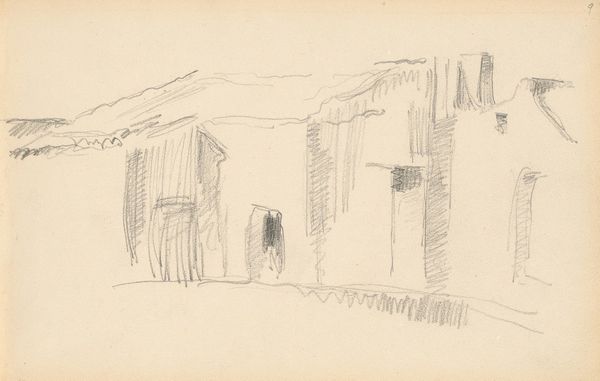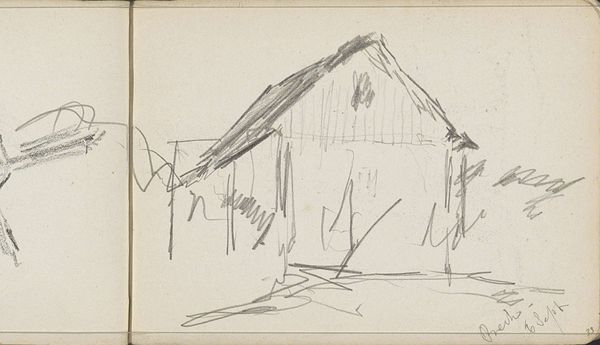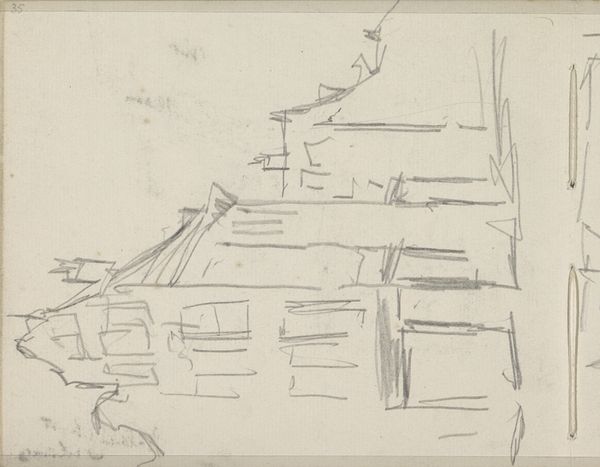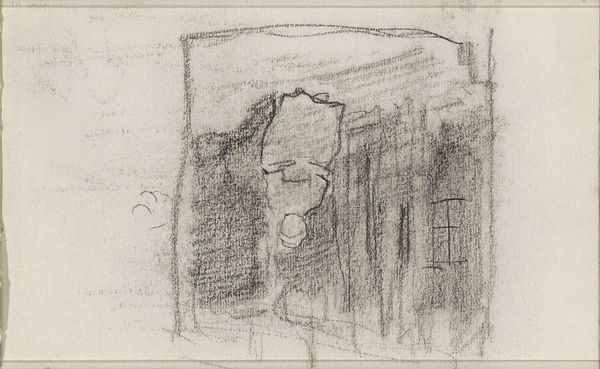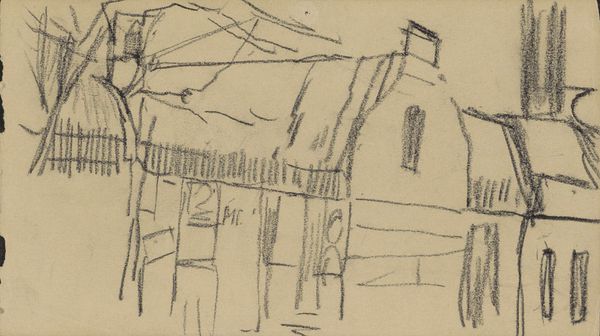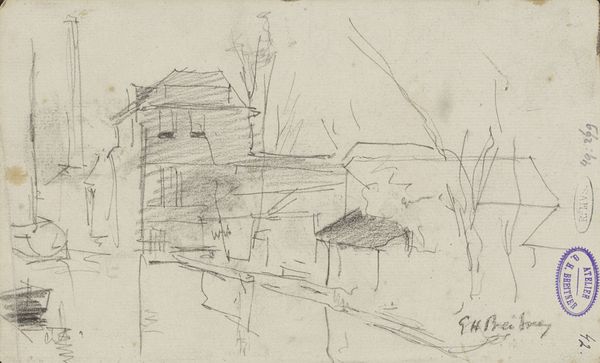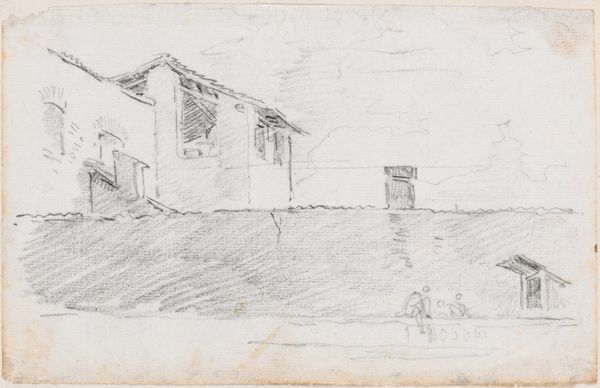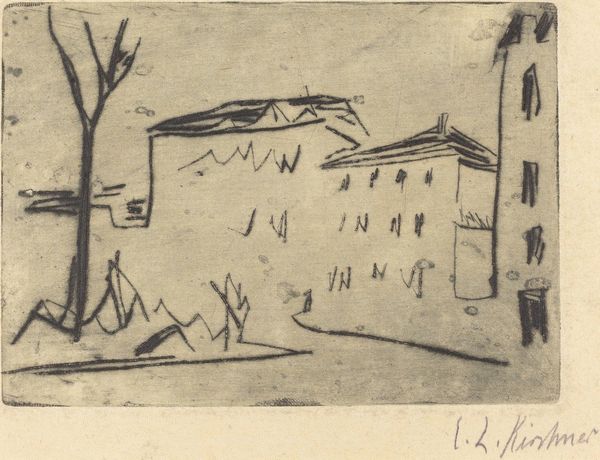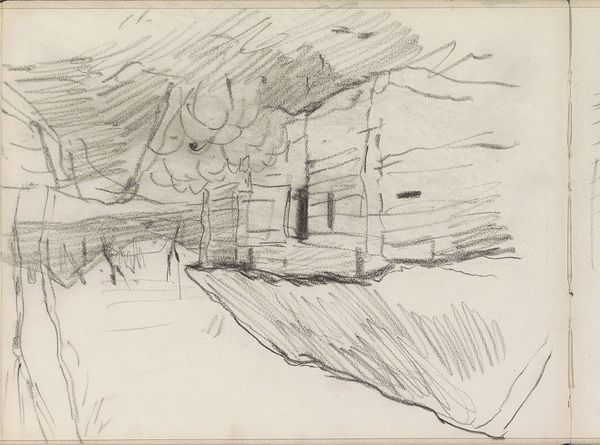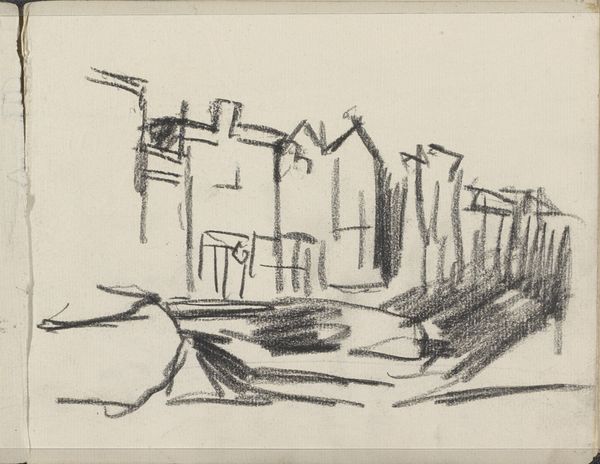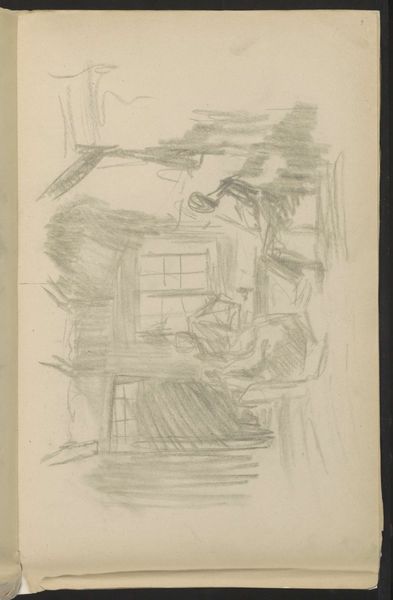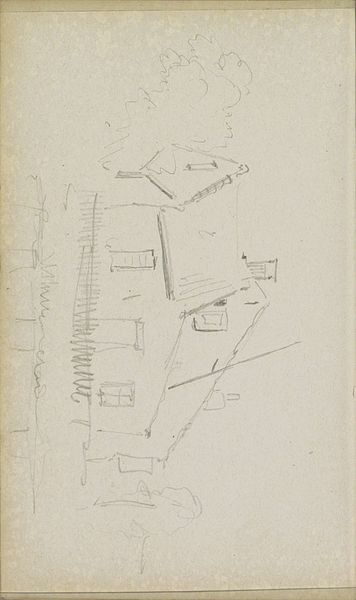
drawing, pencil
#
drawing
#
light pencil work
#
quirky sketch
#
pen sketch
#
landscape
#
personal sketchbook
#
idea generation sketch
#
ink drawing experimentation
#
geometric
#
pen-ink sketch
#
pencil
#
sketchbook drawing
#
storyboard and sketchbook work
#
sketchbook art
Dimensions: height 163 mm, width 212 mm
Copyright: Rijks Museum: Open Domain
Curator: Here we have "Boerderij," which translates to "Farmhouse," a sketch by Leo Gestel, likely made sometime between 1891 and 1941. It's a pencil and ink drawing currently held here at the Rijksmuseum. What are your first thoughts? Editor: Stark. It strikes me as quite somber, even a bit desolate. The rough, almost hurried linework really amplifies that feeling, doesn't it? It’s raw, like a quick study capturing a moment of bleak rurality. Curator: Exactly. Gestel was intensely interested in depicting the realities of the rural landscape and life. I see it less about bleakness and more about how materials are employed: note the contrasts in tone, achieved simply through hatching and varying the pressure of the pencil. Editor: I appreciate that perspective. And when looking at it, I also find myself thinking about the historical context. Consider the periods during which he was making this kind of work: rural populations globally facing the consequences of industrialization, land ownership increasingly concentrated in the hands of few. How do these social dynamics come into play? Curator: Certainly. The way labor is depicted—or rather, not depicted—is interesting. We see the physical structure, the means of production in a sense, without a sense of the workers who operate within that setting. Gestel’s deliberate focus could be seen as a critique of idealizing rural life when such livelihoods involved material struggles. Editor: Or perhaps an observation of those very struggles— the lack of clear figures seems like a purposeful commentary of rural populations gradually pushed away from the rural sphere as lands were claimed by others. It's almost haunting when considering these power structures and shifts. Curator: Indeed. Considering the scale of this piece, which is relatively small, this may simply be the intention, though, to focus in closely to the details and craftsmanship of the labor of architecture versus the labor of human involvement within the context. Editor: Well, I think both interpretations add another dimension to this drawing, particularly as the absence of clear social referents creates this charged space for thinking through land, ownership, and the quiet desperation felt among workers who were losing their jobs in the wake of development. Curator: Absolutely. It reminds us that the simple sketches of the landscape could be loaded with the material consequences and complexities of rural life. Editor: It’s powerful how the simplicity can evoke so many thoughts and associations, urging us to look beyond the aesthetic surface and interrogate the historical and social forces at play.
Comments
No comments
Be the first to comment and join the conversation on the ultimate creative platform.
